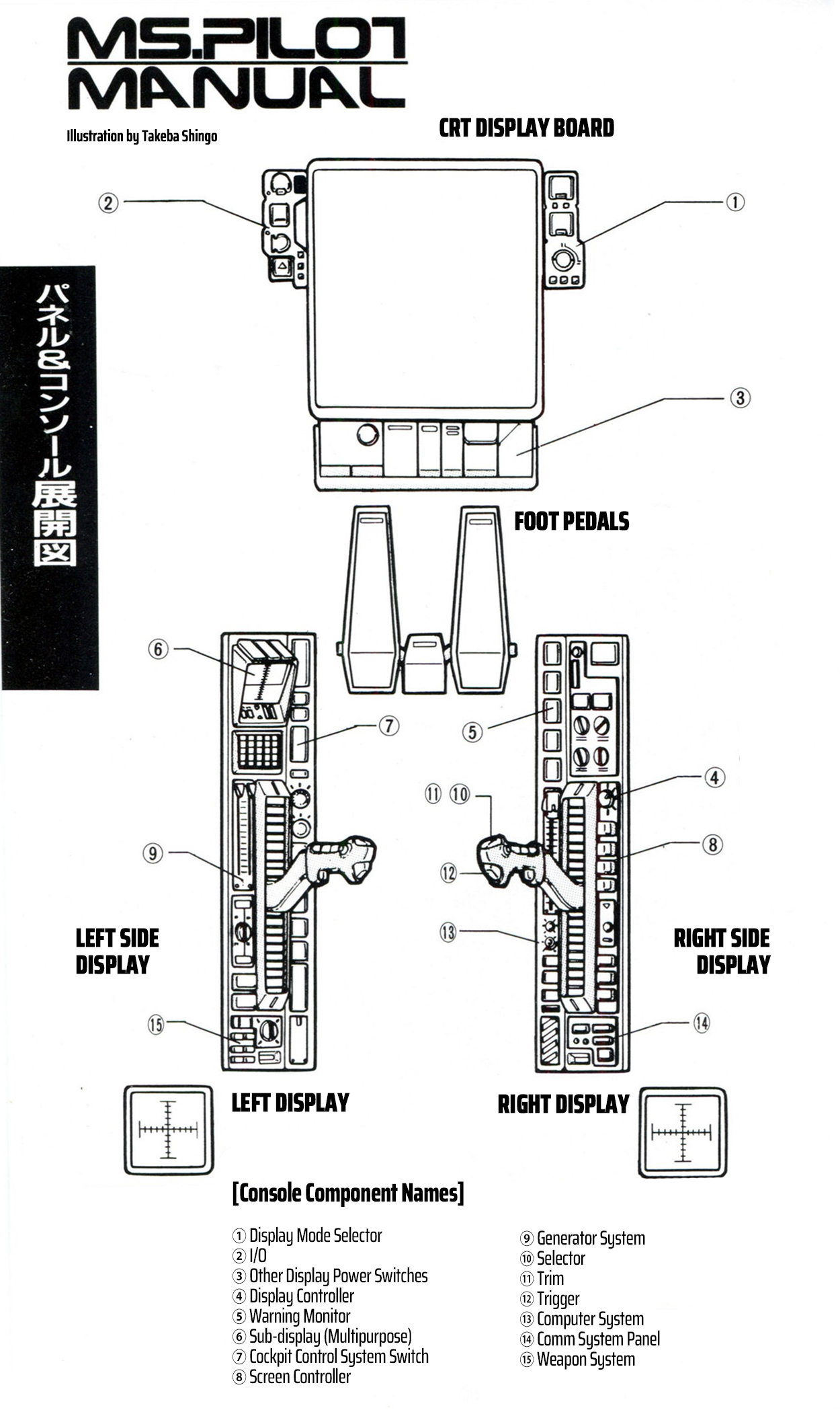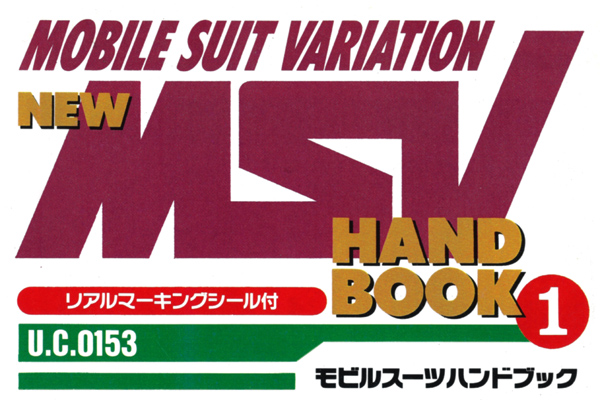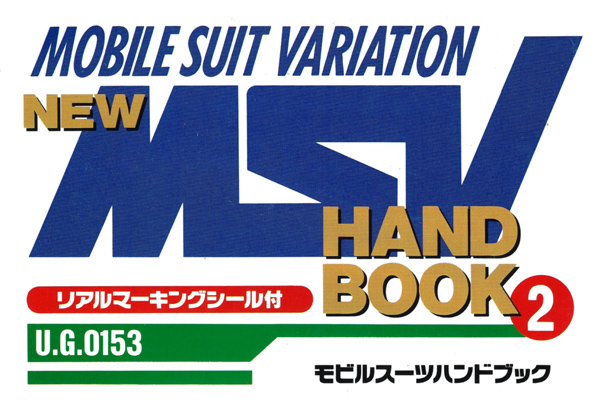MS.PILOT MANUAL (GRYPS EDITION)
1. CONSOLE OVERVIEW
The JTS-17F Standard Linear Seat, developed by Anaheim Electronics in 0084, boasts superior performance in mobile suit control, weapons management, and navigation COM compared to its predecessor, so the workload for pilots has been significantly reduced.
The panoramic monitor utilizes a liquid crystal display, reproducing external visuals in a 360-degree field of view centered on the pilot’s perspective. Video information captured by the mono-eye and several sub-cameras is transmitted to the mobile suit’s control COM and reconstructed through computer-generated imagery.
The CRT display board in front of the seat functions as a multi-display during normal operation, serving multiple purposes. However, during combat, it switches to a targeting display. When engaging multiple enemy units, the projection displays on both sides of the upper part of the seat align the targeting reticle with the enemy images on the panoramic monitor.
Furthermore, the panoramic monitor is used for communication purposes. These operations are controlled through the display mode selector located next to the board on the right side and the display controller on the right-side console. It is responsible for targeting and weapons management COM. By manipulating the display controller, scanning data of enemy units is displayed. If the mobile suit’s data is input into the COM, information regarding performance and armaments can also be acquired.
Inputting the mobile suit’s data is as simple as connecting a compatible COM to the I/O port located on the left side of the board.
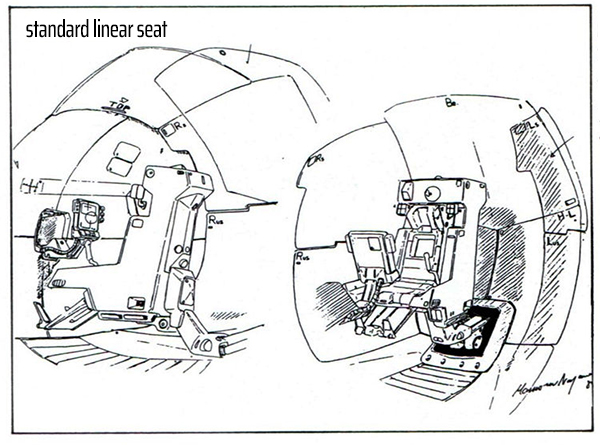
Fire control is primarily managed using the control sticks located on both sideboards, controlling approximately 80 percent of the functions. The sticks have selectors, trims, and triggers for weapons, and the specific weapons that can be used on each side are predetermined. The remaining 20 percent involves optional controls and utilizes the weapon panel on the left-side console.
Mobile suit control is achieved through foot pedals and control sticks. Auxiliary operations such as generator and fuel systems are handled through controls on both side consoles. During combat, the mobile suit’s control COM serves as a backup, alleviating the need for constant monitoring.
Mobile suits can be equipped with various optional attachments and support systems, with most of the control software preloaded. By accessing the mobile suit’s control COM and selecting the appropriate equipment, the pilot can utilize the desired functionality.
2. 2nd GENERATION MOBILE SUITS ADDED FUNCTIONS
All mobile suits currently in use by the Federation Forces (including AEUG and Neo Zeon) are capable of being equipped with the Ballute System.
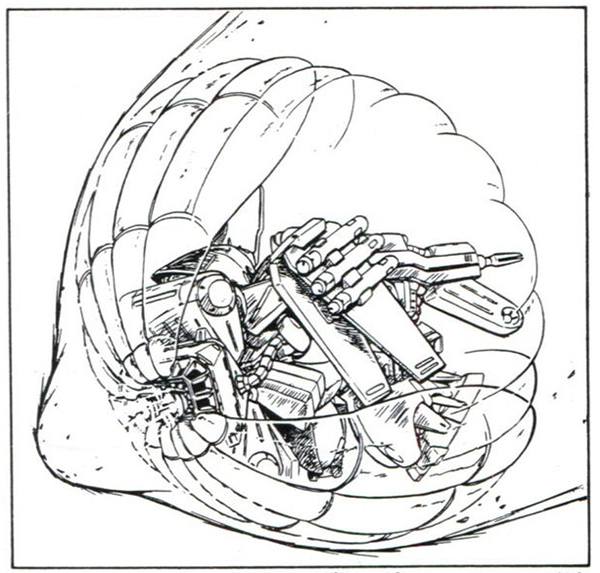
Ballute deployment diagram.
A Ballute is equipment designed for atmospheric re-entry. It releases high-pressure air along a deployed balloon to deflect frictional heat. After decelerating due to air resistance, the balloon is jettisoned, and the mobile suit descends to the ground using hover units equipped on the chest and legs. If there is remaining fuel, the leg hover units can be kept while hovering over the ground, allowing for lightning-fast operations. (Second-generation mobile suits onwards have increased leg thruster power, enabling hover movement. However, under 1G gravity, the propellant consumption rate is intense, limiting its use to short periods.) When the fuel is depleted, the unit can be detached.

A prime example of a mobile suit support system is the Mega Launcher. This is a large mega particle cannon with the range and performance of shipboard guns. Although there is a fusion reactor inside the cannon, it requires energy supply from the mobile suits to operate. As the performance of the mega condensers improved, the need for backup became redundant, but the initial models consumed the energy of two Hizack units.
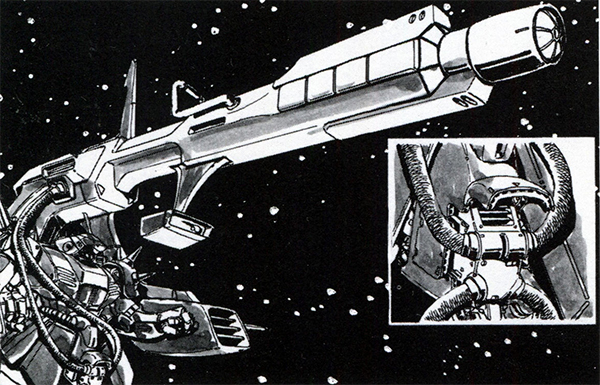
Mega Launcher and energy connector. To operate, it requires the power equivalent to two mobile suits.
The launcher is equipped with a long-range sensor, and the information is displayed on the scope in front of the MS’s Mono-Eye. The MS performs the targeting of the launcher, which is equipped with apogee motors for targeting, and the operation is no different from a beam rifle.
A downside of the launcher is that it takes time to replenish energy for subsequent shots. Also, because the backup energy supply is high-powered, there’s a risk of the mobile suit’s fusion reactor overheating.
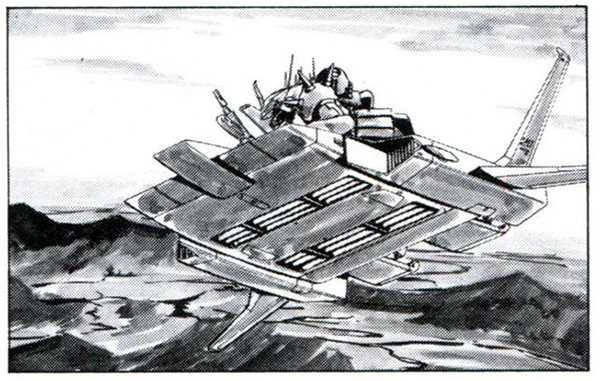
Support systems also include sub-flight systems. There are two types: for atmospheric and space use, but basically, they all fly with the mobile suit onboard. Except for the Dodai Kai, these are unmanned and connect to the mobile suit’s manipulator to control the unit. Although remote control by radio is possible, control is lost under Minovsky particle scattering. Therefore, the standard tactic is to engage in shooting battles while onboard the flight unit, but highly skilled pilots have mastered advanced tactics where they fly the mobile suit independently (limited to short periods, as it will fall when the propellant is exhausted), defeat the enemy, and then re-dock with the flight unit.
3. ESCAPE SYSTEM
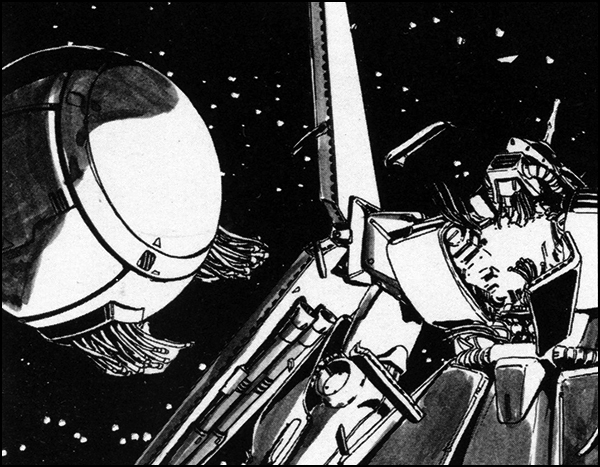
Mobile suits currently in use, with some exceptions (such as the MSZ-010 ZZ Gundam, which employs the Core Block System), have adopted an ejection pod system. This escape system, which ejects the entire cockpit block, has a higher survival rate compared to the single-seat ejection system used during the One Year War. The process is as follows: when significant damage occurs to the mobile suit, the body control COM communicates this to the main COM, which then blows away the first layer of armor around the cockpit block with preset explosives. Then, the ejection pod is also launched out of the machine using explosives. The pod will then drift in space on the inertia of the launch. All that’s left to do is to activate the distress beacon and wait for rescue. The linear seat can be removed from the pod by disengaging the arm. The seat is equipped with apogee motors, allowing it to move.
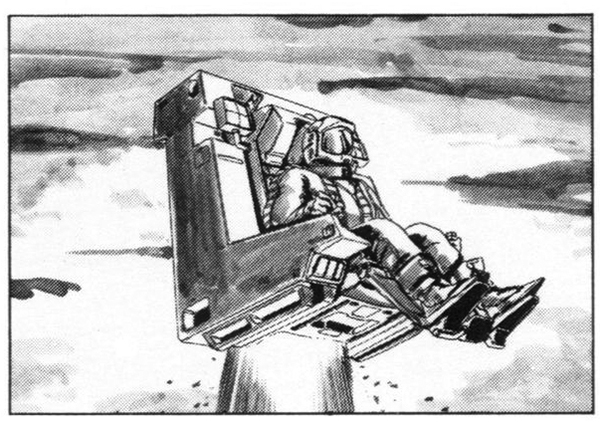
Within the atmosphere, the thrusters under the seat are used to act as an ejection seat. This allows for safe evacuation from the danger zone without the need for a parachute.



